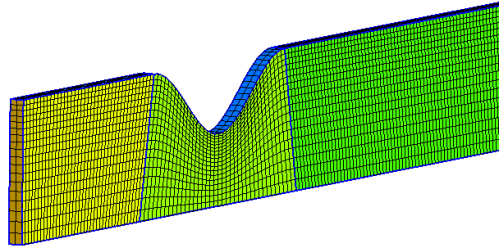
In finite elements, the highest-dimensional mesh entities are called "elements," "edges" are 1D and "nodes" are 0D. Tetrahedra are often abbreviated as "tets" triangles are "tris", quadrilaterals are "quads" and hexahedra (topological cubes) are "hexes." If the elements are 3D, then the 2D entities are "faces." In computational geometry, the 0D points are called vertices. Many meshing techniques are built on the principles of the Delaunay triangulation, together with rules for adding vertices, such as Ruppert's algorithm.Ī distinguishing feature is that an initial coarse mesh of the entire space is formed, then vertices and triangles are added. In contrast, advancing front algorithms start from the domain boundary, and add elements incrementally filling up the interior. A special class of advancing front techniques creates thin boundary layers of elements for fluid flow. In structured mesh generation the entire mesh is a lattice graph, such as a regular grid of squares.

Structured mesh generation for regular grids is an entire field itself, with mathematical techniques applied to ensure high-polynomial-order grid lines follow the solution space smoothly and accurately. In block-structured meshing, the domain is divided into large subregions, each of which is a structured mesh. Some direct methods start with a block-structured mesh and then move the mesh to conform to the input see Automatic Hex-Mesh Generation based on polycube. Some types of meshes are much more difficult to create than others.Īnother direct method is to cut the structured cells by the domain boundary see sculpt based on Marching cubes. Simplicial meshes tend to be easier than cubical meshes.


 0 kommentar(er)
0 kommentar(er)
